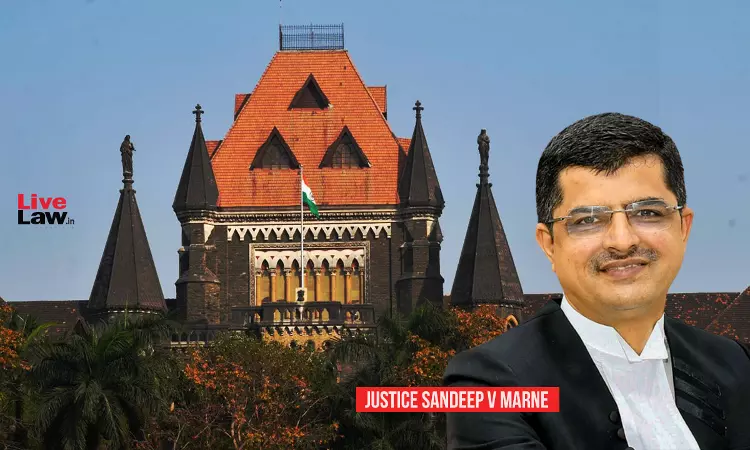- Home
- /
- High Courts
- /
- Bombay High Court
- /
- Gratuity Calculated On Last Drawn...
Gratuity Calculated On Last Drawn Salary At Time Of Final Resignation If Employee Transferred Among Institutes Of Same Management: Bombay HC
Amisha Shrivastava
13 Jan 2024 11:50 AM
The court held that there would be no bifurcation of the gratuity amount based on last drawn salary in individual spells of service in the distinct institutes.
The Bombay High Court held recently that when an employee is transferred from one institute to another of the same management with continuity in service, gratuity will be calculated on the basis of last drawn salary at the time of final cessation of service.Justice Sandeep V Marne held that there would be no bifurcation of the gratuity amount based on last drawn salary in individual spells...
The Bombay High Court held recently that when an employee is transferred from one institute to another of the same management with continuity in service, gratuity will be calculated on the basis of last drawn salary at the time of final cessation of service.
Justice Sandeep V Marne held that there would be no bifurcation of the gratuity amount based on last drawn salary in individual spells of service in the distinct institutes.
The court dismissed four writ petitions filed by employers challenging the entitlement to gratuity of an employee who was transferred Terna Polytechnic, Navi Mumbai to Terna Engineering College, Navi Mumbai, and finally resigned from the latter.
“Once it is held that the two spells of services in Terna Polytechnic and Terna Engineering College are interconnected, cessation of service for the purpose of payment of gratuity under Section 4 of the Gratuity Act would occur on 21 July 2011 when Respondent resigned from the services of Terna Engineering College…There is nothing on record placed to prove that there was termination/cessation of services with Terna Polytechnic on account of resignation from services. Thus Respondent is entitled to gratuity on the basis of last wages drawn as on 21 July 2011 from Terna Engineering College in respect of his entire service from 17 September 1992 to 21 July 2011”, the court held.
The respondent Ravi Bhadrappa Randale served as a lecturer in Terna Polytechnic from September 17, 1992, to June 30, 2004, and subsequently joined Terna Engineering College on July 1, 2004, continuing until his resignation on July 21, 2011.
Randale filed an application for gratuity as he had not been paid for his services in both institutions. The Controlling Authority allowed the application partly and directed Terna Polytechnic and Terna Engineering College to pay separate amounts of gratuity. All the parties challenged the quantification of gratuity.
The Appellate Authority dismissed the appeals filed by Terna Polytechnic and Terna Engineering College and allowed Randale's appeal. It directed the Controlling Authority to determine the last drawn wages based on the VI Pay Commission scale.
Subsequently, the Controlling Authority computed the gratuity based on the last drawn wages of Randale at Terna Engineering College. It once again bifurcated the amount between the two institutes and imposed simple interest at the rate of 18 percent per annum with effect from July 21, 2011, till payment of the entire amount.
The Appellate Authority partly allowed further appeal by all parties, determining a higher last drawn salary and increasing the gratuity amount as well as bifurcating it among the two institutes, but reducing the interest rate to 10 percent per annum.
Thus, Terna approached the high court. The two educational institutions, owned by Terna Public Charitable Trust, argued for a division of gratuity payments based on separate services, while Randale pressed for a unified calculation considering the entirety of his employment.
The petitioners contended that the services in the two institutions should not be clubbed together for calculating gratuity. They argued that there was no continuity between the two services and that the last last pay drawn in Terna Polytechnic as of June 30, 2004, should be considered for the calculation of the amount to be paid by it.
The court relied on Section 2-A of the Gratuity Act, defining "continuous service," and noted that while the petitioners claimed to be distinct legal entities, there was no evidence of a fresh recruitment process when Randale transitioned from one to the other. The relieving letter and the absence of a gap between the spells of service established the continuity of employment, the court observed.
Thus, the court held that there was connectivity in the two spells of service, leading to a continuous period of employment from September 17, 1992, to July 21, 2011. Therefore, the court determined that the gratuity should be based on the last drawn wages as of July 21, 2011, from Terna Engineering College.
The court acknowledged an error in bifurcating the gratuity amount between Terna Polytechnic and Terna Engineering College but deemed it inconsequential given the common management of both institutions. Since there was continuity in service with the same management, the court held that only Terna Engineering College should be directed to pay the entire gratuity amount.
The court dismissed the writ petitions and held that Randale is entitled to withdraw the entire amount of gratuity deposited with the Appellate Authority and the court, along with accrued interest.
Case no. – Writ Petition No. 11864 of 2019
Case Title – M/s. Terna Polytechnic v. Ravi Bhadrappa Randale and connected cases

